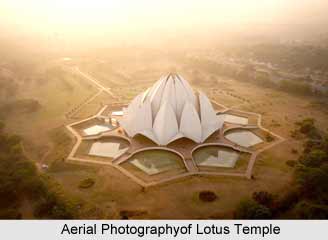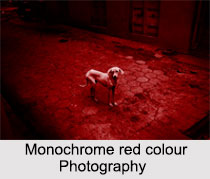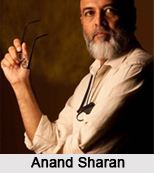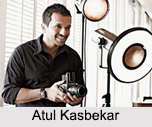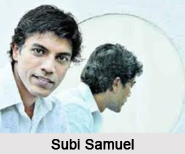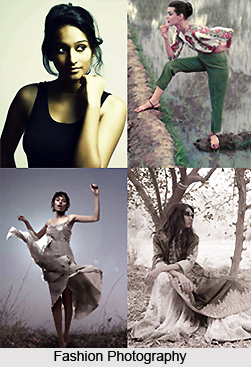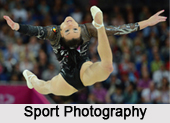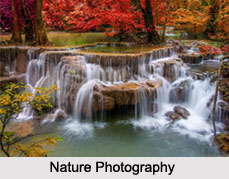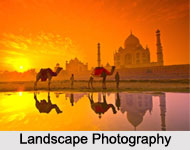 Photojournalism is a particular form of journalism (collecting, editing and presenting of news material for publication or broadcast) that creates images in order to tell a news story. Generally, the work of a photojournalist is somewhat similar to a reporter, except the fact that a photo journalist doesn"t gather, write and report news stories. It is now generally understood to refer only to still images, and in some cases to video used in broadcast journalism. Photojournalism is distinguished from other close branches of photography (like documentary photography, street photography or celebrity photography) by the quality of timeliness, objectivity and narrative.
Photojournalism is a particular form of journalism (collecting, editing and presenting of news material for publication or broadcast) that creates images in order to tell a news story. Generally, the work of a photojournalist is somewhat similar to a reporter, except the fact that a photo journalist doesn"t gather, write and report news stories. It is now generally understood to refer only to still images, and in some cases to video used in broadcast journalism. Photojournalism is distinguished from other close branches of photography (like documentary photography, street photography or celebrity photography) by the quality of timeliness, objectivity and narrative.
Photojournalism involves use of photography skills and aesthetics to the area of news reporting and journalism. In other words, it is the exercise of creating images in order to tell a news story. It includes collecting, editing and presenting of news material for publication or broadcast to the news media like newspapers, magazines, television channels, websites and other journals.
Origin of Photo Journalism in India
Photography was introduced in India in 1840. Indian photojournalism flourished with the beginning of newer and lighter cameras like the Rolleiflex, the Speed graphic, the Leica, and the Contax that allowed photographers to be far more portable. The rise of the press owned by both Anglo-Indians (Times of India, Statesman) as well as nationalists (Bombay Chronicle, Leader, Bande Mataram, Hindustan Times), provided an influential enhance to this kind of photography. Images of nationalist leaders that had so far been censored by the British government could now be printed for greater public access. The good times gave birth to iconic photographers like Sunil Janah, T.S Satyan and Homai Vyarawalla, amongst many others.
Career Prospects in Photo Journalism in India
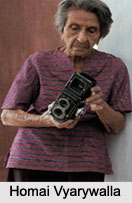 In India, a lot of educational institutions have started performing separate courses for photo journalism at postgraduate diploma level. For joining in the program, candidates are required to have a graduation degree from any recognized institute or university. Photojournalists can work for newspapers, magazines or any other media houses. One can select for commercial photography, fashion photography, industrial photography, wildlife photography, aerial photography, scientific photography, etc. as his or her specialized field. There is a lot of scope for photojournalism.
In India, a lot of educational institutions have started performing separate courses for photo journalism at postgraduate diploma level. For joining in the program, candidates are required to have a graduation degree from any recognized institute or university. Photojournalists can work for newspapers, magazines or any other media houses. One can select for commercial photography, fashion photography, industrial photography, wildlife photography, aerial photography, scientific photography, etc. as his or her specialized field. There is a lot of scope for photojournalism.
Ethics in Photo Journalism in India
There are some ethics and responsibilities in photojournalism and some of them are as follows:
•A photojournalist"s research for the story should be perfect; shooting should be well-sourced, supported by strong evidence, examined and tested, apparent and explicit.
A photojournalist should not just go for the shocking, sad and sensitively charged images.
•A photojournalist should not crop or edit beyond what is technically essential to exhibit the image.
•A photojournalist should be sure about his or her photograph reflects the true circumstances truthfully.
•A photojournalist should capture the real world as it is happening.
Popular Indian Photojournalists
Indian photojournalism can be logically and substantially traced to Homai Vyarawalla, the first Indian woman photojournalist. She was principal in photographing the last days of the British Empire and her work traces the birth and growth of a new nation. Prior to her entrance in this competitive world, there was a time when Indian photojournalism was restricted only to the male bastion.
Mayank Austen Soofi: Mayank Austen Soofi is a Delhi-based Indian writer, blogger and photojournalist, who write well-liked posts for Hindustan Times and Mint on culture, food and literary landscapes of Delhi. He is identified for his website and blog "The Delhi Walla, a multifaceted guide of the city", which has been praised as being "the most compelling guide to India"s capital" and "a one-man encyclopaedia of the city".
Pablo Bartholomew: He is an award-winning Indian photojournalist and an autonomous photographer based in New Delhi. Pablo Bartholomew is renowned for his photography, as an educator running photography workshops and as manager of MediaWeb, a software company specialising in photo database solutions and server-based digital archiving systems. He was awarded the Padma Shri by the Government of India in 2013. In 2014, he received the "Ordre des Arts et des Lettres".
Homai Vyarawalla: Homai Vyarawalla, commonly known by her pseudonym "Dalda 13", was India`s first woman photojournalist. First active in the late 1930s, she retired in the early 1970s. In 2011, she was awarded Padma Vibhushan, the second highest civilian award of India.
Sooni Taraporevala: Sooni Taraporevala is an Indian screenwriter and photographer, who is best known as the screenwriter of Mississippi Masala, The Namesake and Oscar-nominated Salaam Bombay, all directed by Mira Nair. She directed her first feature film, based on a screenplay of her own entitled "Little Zizou." This film explores issues facing the Parsi community to which she belongs. She was awarded the Padma Shri by Government of India in 2014. 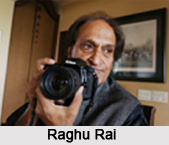
Subhash Sharma: Subhash Sharma is a freelance photographer based in Mumbai, who specializes in humanistic and documentary photography. His photographs are regularly published in photographic journals, illustrative books and magazines like TIME magazine USA, Nikkei Japan, Venerdi Italy, The Globe and Mail Canada, Quebec Science, IEEE Spectrum USA, Courrier International Paris, The National Newspaper Abu Dhabi, Hindustan Times, Marwar magazine, G2 magazine, ROUGH Travel Guide to India. His work has been exhibited at LSE. He was awarded with the China International Press Photo Award, Indian Press Photo Award, Humanity Photo Award, China, Merit award of Japan, etc.
Benu Sen: Benu Sen was an Indian photographer from Kolkata. He was the Secretary General of the Federation of Indian Photography (FIP), the Indian chapter of the Federation Internationale de l`Art Photographique (FIAP) and President of the Photographic Association of Dum Dum (PAD). In his book, History of Journalism: A Legend of Glory, Prof. Santanu Banerjee mentioned, "His passion was to guide the oncoming photographers in the profession. He was awarded with Life-Time Achievement award, Master of Photography, Fellowship of the Royal Photographic Society of Great Britain (FRPS) etc.
Raghu Rai: Raghu Rai is an Indian photographer and photojournalist. He was a protege of Henri Cartier-Bresson, who appointed Rai, then a young photojournalist to Magnum Photos in 1977. He has been awarded with Padmashree and Photographer of the Year from USA.
Arindam Mukherjee: Arindam Mukherjee is an Indian photojournalist who works in print media. Arindam"s works have so far been published in Private Magazine, The Sunday Telegraph, Stern, New Statesman, Der Spiegel, Liberation, Devolkskrant, Le Figaro and several other major publications around the globe. Arindam normally produces reports on sociological issues of India. He has been awarded with the New America Media prize for photojournalism in 2009.
Photojournalism Institutes in India
A number of the foremost institutions offering programs in photo journalism as part of the curriculum of other media courses in India are – India International Photographic Council (New Delhi), Amity School of Journalism and Communication (Delhi), Asian College of Journalism (Chennai), Bhavan"s Institute of Communication and Management (Mumbai), Indian Institute of Mass Communication (Delhi), and Indian Centre for Media and Communication (Pune).
Present Scenario of Photojournalism
Indian photojournalism flourished throughout the end of the colonial era and with the start of newspapers like - The Bombay Chronicles, Hindustan Times etc. Indian photographers like Homai Vyarywalla and Sunil Janah were among the first few who took the charge of raising the benchmark of photojournalism in India. Now, Indian photojournalists like Raghu Rai, Raghubir Singh, Pablo Bartholomew and Sohrab Hura have made a mark in the world of photojournalism. Photojournalism as a career in India is still at a budding stage and has great scope to grow.





